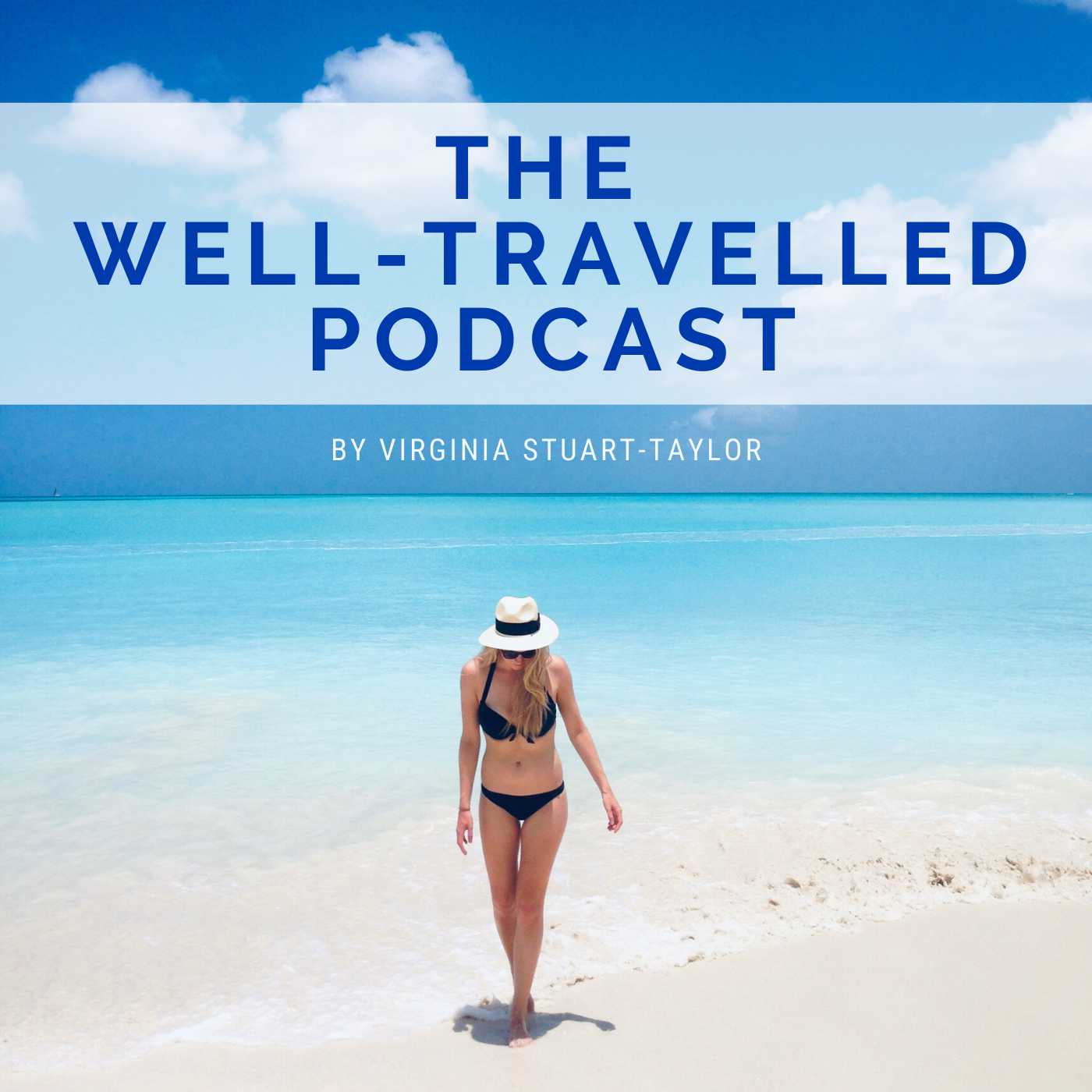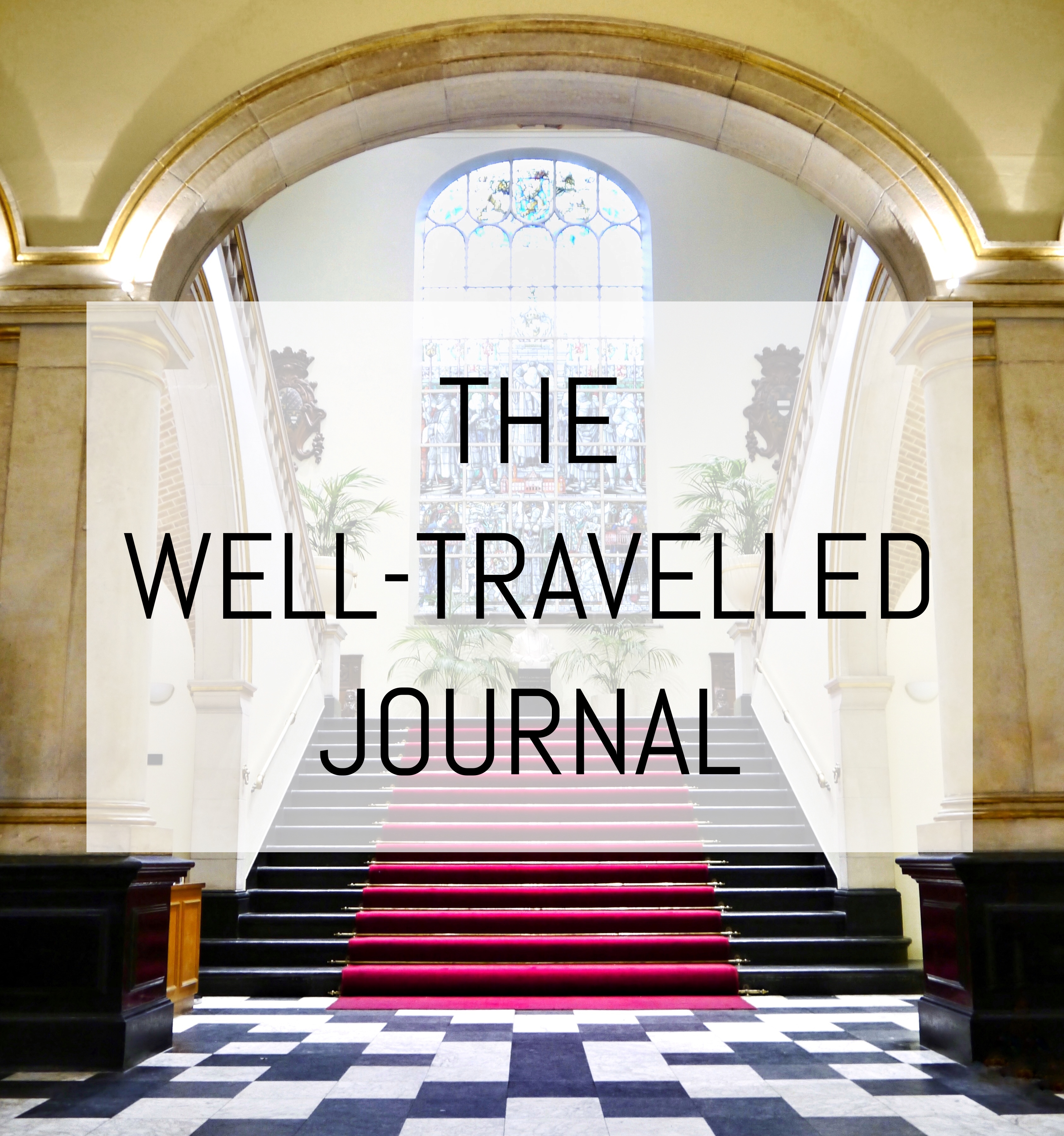The Ultimate Guide to Exploring St Petersburg in Russia

The last trip of my sabbatical saw me head to the biggest country in the world: Russia! My two weeks in Russia were a last minute addition to the sabbatical itinerary and a surprising success, I really didn’t expect to love it as much as I did! I was mostly in St Petersburg, the so-called “Venice of the North”, before spending three nights in Moscow, which I’ll cover in a separate blog post. First of all though before I go any further, if you want to fill your imagination with inspiration for Russia and St Petersburg, please watch the truly brilliant BBC series of Leo Tolstoy’s War & Peace which I watched while living in the city and which brought the entire experience to life for me!
Obtaining a Russian Visa
I’d argue that St Petersburg is much, much more beautiful than Paris, and I’m surprised that there aren’t more bloggers and journalists raving about it, or tourists treading its streets. The reason for this, in my opinion, is the extra paperwork involved in getting a Russian tourist visa, as opposed to a country in the EU for example. If you weren’t aware, there are quite a few steps involved in travelling to Russia and it’s not exactly a last minute destination, nor simply for a long weekend. As I mentioned earlier, my trip was indeed very last minute and I only returned to the UK from Nepal 7 days before flying out to St Petersburg, meaning I had only 5 working days to apply for and receive my Russian visa – something which can normally take up to a month! This is where my guardian angel stepped in, in the form of VisaToHome.co.uk who handled every aspect of my express visa application for me.
I merely had to submit to their website a passport scan, passport photo and fill in a well-designed application form that takes all the complexity out of the original form that the Russian consulate in London require. When handing in my passport to their office in Notting Hill Gate I also submitted my fingerprints (a requirement of the Russian consulate). In return they organised my invitation letter (another essential component of your visa application) and they took all my papers to the Russian consulate and waited the several hours of queues on my behalf, also reducing the risk of rejection, as they’re the experts and well-versed in how to avoid rejection. As time was of the essence, I couldn’t afford even a single day of delays due to a refusal, so having an expert supervise and handle my application was a godsend. The following day after dropping off my passport at their office, my passport and visa was ready to collect and I could begin looking forward to the trip safe in the knowledge that I’d be allowed past the border control! As well as Russian visas, VisaToHome.co.uk also handle tourist and business visa applications for India, China, France, Kazakhstan, Azerbaijan, Belarus, Turkey, Australia, Sri Lanka, Canada and the US, and can also organise everything remotely if you’re outside of London – even biometric fingerprint collection if necessary. I was really impressed by the service at VisaToHome.co.uk and I would happily recommend them to anyone.
Why St Petersburg?
My reason for visiting St Petersburg was academic, as I wanted to brush up my Russian language. In my first and second year of university I studied Russian with a wonderful teacher Yuliya, from the Ukraine, but with my last class having taken place in 2010, I could hardly claim to speak it to any level at all and it seemed like a bit of a wasted effort. I love learning languages, and didn’t need much more excuse than that to book myself onto a two-week intensive Russian course at the Derzhavin Institute. The school itself was fantastic: my teachers Marina and Daria were so funny and peppered classes with cultural points and interesting anecdotes from life in the USSR; my classmates came from Italy, Germany, the US and Japan and were all great fun; and the school organised a shared flat for me with four lovely Italian girls, allowing me to practice my Italian too. I’d highly recommend it if you’re interested in learning Russian, and the student card gave me huge discounts in canteens / ballet tickets / museum tickets / boat trips / etc. and the Hermitage Museum was even completely free. However I’m assuming that most of my readers aren’t planning on learning Russian anytime soon, so for now I’ll focus on writing about St Petersburg and my top tips for exploring this stunning city.
My journey from London to St Petersburg started very stylishly and in great comfort with an excellent Blacklane chauffeured car to whisk me off to Heathrow Airport at 6:30am, in time for my morning British Airways flight. I’ve used Blacklane a few times before, whose sleek website can book chauffeurs in over 180 cities all over the world, and the journeys always feel like such a treat!

When to go
May to September are said to be the best months to visit. In my mind, May is the perfect time to visit St Petersburg because there’s great sunny spring weather (but not too unbearably hot), plenty of daylight from 4am – 11pm as the famous White Nights approach, most museums have longer summer hours and boat trips start to run in the evening too, and the crowds of summer holiday tourists haven’t yet arrived, so the city still feels peaceful, authentic and there are no queues. It’s said that it gets a lot busier (and prices go up) from June-August. However now that I’ve been there in Spring, I’d also love to experience the contrast of -20°C mid-winter snowdrifts, frozen ice-covered canals and Russians all wrapped up in furs. The Russia of all the stories. So if you travelled in winter, you’d still have a great experience.
How long to visit
1 week would be enough to see most of St Petersburg. I spent 2 weeks, but alongside my classes and homework I had a bit less time for sightseeing. I certainly wouldn’t recommend St Petersburg for just a long weekend – for the fact that it’s a 3-4 hour flight away, there’s so much to see, and the visa is quite expensive. But I’d happily have stayed for 3 months in the city if I could!

Where to stay
I stayed in a shared flat near Technologisky Institute metro station which was organised by my school, and I quite liked how much it felt like truly living in the city – doing a supermarket shop and eating with my housemates. I had looked into Airbnb but wasn’t too impressed with the selection, apart from this absolute gem if you can get it: “Quiet Modern Kvartira”. In terms of areas of the city to live in, you want to be south of the Hermitage. Not much goes on for tourists in the northern islands of Petrogradsky and Vasilyevsky so steer clear of them, and focus on searching in what the maps call Kazanskiy Island instead, north of the Fontanka river.
What to see and do
– Ballet and Classical Music –
First of all, book yourself tickets to see a ballet at the world-famous Mariinsky Theatre. There are two: the grand and ornate, gold-interior Old Mariinsky opened in 1860 in the times of the Tsars, and the modern Mariinsky II with much more comfortable seating and better acoustics. I was torn between the two… I desperately wanted to see Tchaikovsky’s Swan Lake ballet (only showing in Mariinsky II while I was there) but I also wanted to experience the splendour of the imperial theatre. I finally decided I’d rather spend 3 hours watching the right ballet on stage, rather than 10 minutes admiring the right interior decoration. Tickets cost roughly between 4,000 – 8,000 roubles but it was 100% worth it! The ballerinas are basically elegant gymnasts in beautiful tutus and I was utterly mesmerised by the 36 swans and myriad other characters – especially the male ballerinas and the court jester. Having seen the Black Swan film, featuring a psychosis-suffering prima ballerina, also added a whole new layer to the performance as well, as I mused on the performers’ lives off-stage and the torturous training they’ve each been through to reach such heights. I also stumbled on other smaller theatres showing ballet: in the Hermitage Theatre and the Mikhailovsky Theatre.
You must also catch some classical music while in St Petersburg. It’s everywhere: one day I strolled past a philaharmonic orchestra performance about to begin; I’d have loved to catch a performance in the Yusopov Palace‘s intimate theatre (used for filiming scenes from the BBC’s 2016 incredible series War and Peace); and when I visited the Sheremetev Palace, housing the Museum of Music, there coincidentally happened to be a grand piano concert by child geniuses held in the spectacular chandeliered ballroom, for just 300 roubles. I was in heaven.
– Palaces and Museums –
Many palaces and homes of the former Russian nobility have now been converted into museums in their own right or house collections of art, musical instruments or even bejewelled Fabergé eggs. Don’t miss the Yusopov Palace (in whose basement Rasputin was murdered), the Winter Palace (now housing the artworks of the enormous Hermitage Museum, but well worth a visit even if you’re not interested in the art) and the Shuvalov Palace (now housing the Fabergé Museum).
If you have plenty of time then also take a look around the Stroganoff Palace and Marble Palace, both of which belong to the Russian Museum. I didn’t manage to visit the Russian Museum, but it features a vast collection of Russian fine art, sculptures and icons. As I explored these vast former homes I felt like I was in a bit of trance. The extravagance and wealth of the Russian Empire outshines anything we in Britain ever had – their wealth was unparalleled. For a few Russian oligarchs, it probably still is unparalleled. St Petersburg puts Buckingham Palace in London to shame.

– Churches and Fortresses –
Before the Soviet government effectively banned religion, Russia was an Orthodox Christian country and the differences from Catholicism or Protestantism are visible in the architecture and style of the churches, the best of which to visit are: the Church on Spilled Blood (featuring those famous coloured onion domes and an entirely mosaic interior), the Kazan Cathedral (on Nevsky Prospect and an imitation of St Peter’s Basilica in the Vatican City) the dome of St Isaac’s Cathedral (a short climb rewards you with 360° views over the city) and the Nikolskiy Cathedral (a very photogenic blue-white church at the intersection of two canals).

At some point you must head over to Petrogradsky Island to the north, to visit the St Peter & Paul Fortress. As well as having a sandy beach perfect for picnics, it also provides a great view of St Petersburg from across the Neva River. The fortress is not at all fortress-like in the imposing or scary sense, and it was actually never used to defend the city. Nowadays it’s an idyllic spot to explore, with car-free cobbled streets, ice-cream stands, leafy trees and gardens, the stunning yellow cathedral in which are buried all the former Tsars, including the doomed Romanovs who were all executed in 1918. You can also walk along the ramparts and explore a former prison.
– And why not…
Stroll around parks and gardens: Summer is glorious in St Petersburg and the Summer Garden in particular beautiful to visit.
Paint Matryoshka dolls: The Derzhavin Institute, where I was studying, had a programme of events each afternoon, which is how I found myself putting paintbrush to palette to decorate two Matryoshka dolls one afternoon. You’ll see hundreds of dolls in souvenir shops and they are exceptionally intricate and hand-painted, which you appreciate all the more when you actually try to do it yourself! Out of practice on the easel, I played it safe and stuck to a very simple blue-white modern design.
Take a boat ride: In summer months there are lots of boats navigating the small canals that weave their way through St Petersburg and for 1,000 roubles you can spend an hour or so being guided around and it’s a fantastic way to orientate yourself in the city when you first arrive.
Visit the Russian baths: I didn’t personally do this, but a very traditional Russian activity is the “banya” – a Russian bathhouse where you get steamed up in a sauna and then cleansed by being hit with branches of birch leaves. If you go, then let me know what it’s like, as it sounds rather bizarre!
Where to eat
As I lived in a flat I didn’t try out that many restaurants, but I can wholeheartedly recommend one in particular: Terrassa. It’s a rooftop restaurant overlooking the Kazan Cathedral, in prime position just off Nevsky Prospect, the city’s main high street. With Russian, Italian and Japanese options the menu is huge and just delicious. Sticking to the Russian theme go for the borsch (hot beetroot soup with meat and sour cream) and beef stroganoff (beef with mushrooms and cream on a bed of whole-wheat – a delicious dish created in the nearby Stroganoff Palace in the 1800s). For great and easy lunches in the Russian stolovaya tradition (meaning ‘canteen’), head to the one of the nine Marketplace canteens, which serve up delicious freshly cooked food among very well designed interiors. Aside from those, make sure you try pelmeni (chicken or pork dumplings) and the ice-cream, a Russian favourite.

Outside St Petersburg
If you’re a fan of looking round luxurious palaces, stately homes and pristine parks, then dedicate at least two days to exploring the countryside around the city. If you start early, then Catherine the Great’s blue-and-white Summer Palace can be followed by a visit to the smaller Pavlovsk Palace nearby in the afternoon.
Part of the beauty of these palaces is their incredible gardens and parks, so pick a sunny day to visit. The ballroom in the Summer Palace in particular is so beautiful that it was used for filming the heart-stopping ball scene of the BBC’s War and Peace.
Another one I didn’t manage to visit was fountain-adorned Peterhof, supposedly the “Russian Versailles”, after the French palace from which Peter the Great took inspiration. Despite not going, the photos look incredible and my friends in the city who went said they loved it. You can get there by boat for a scenic journey.
The amazing thing about these palaces (and those in St Petersburg as well) is that they were all torn apart and neglected during the Soviet years, in rebellion against icons of the Russian imperial era, and they have all since been restored to their former grandeur just in the last 20 years since the 1990s. You’ll see black and white photos of the derelict states the various palaces were found in, and it’s quite impossible to imagine how they could ever replicate the designs (or find the money to afford to do so!).
______________________________










































































I visited St Petersburg last month during the white nights-amazing! We did an intensive two day tour but I wish we could have stayed longer (we avoided the visa by taking a Baltic cruise). I’d definitely love to go back!
LikeLike
Yes I did hear about the cruise-visa option and I’m glad you enjoyed it – but St Petersburg does require more than 2 days! Weren’t the White Nights impressive?!
LikeLiked by 1 person
Agreed, I hope to make it back some day. The white nights were amazing! It never seemed to get fully dark.
LikeLike
Right! St. Petersburg (Leningrad then) stood out from all the cities we visited as students from across Europe. Nothing could compare to it!
LikeLike